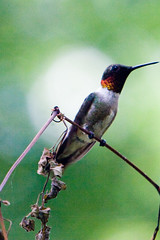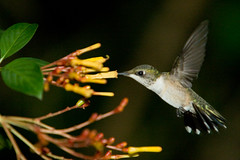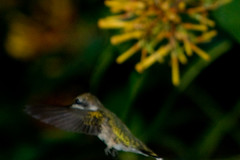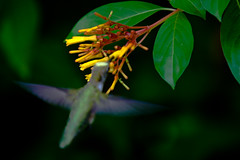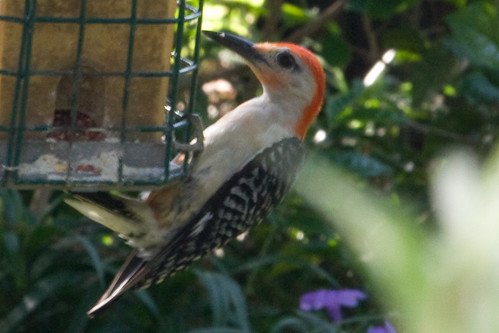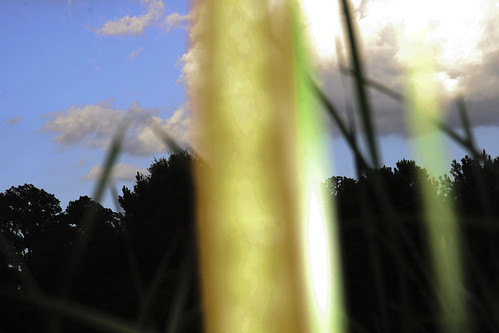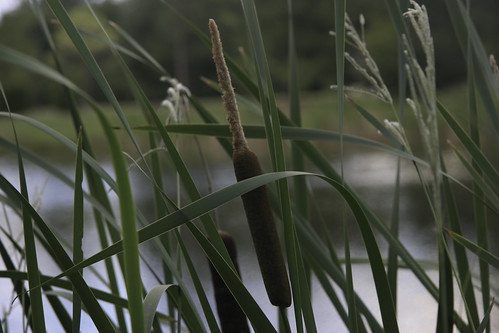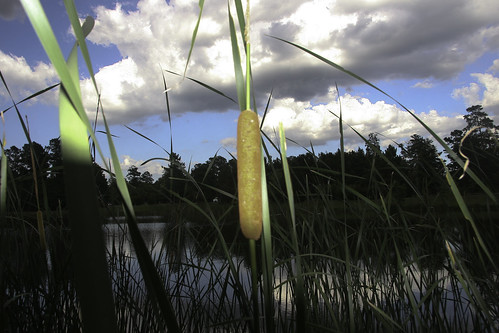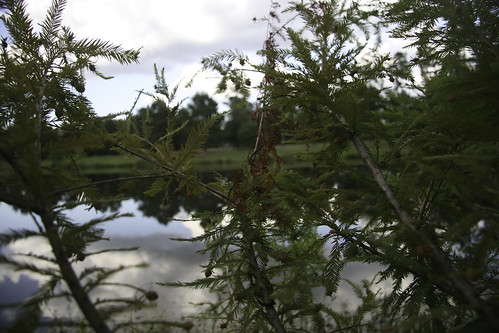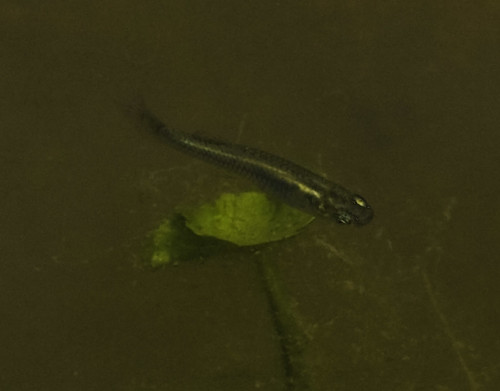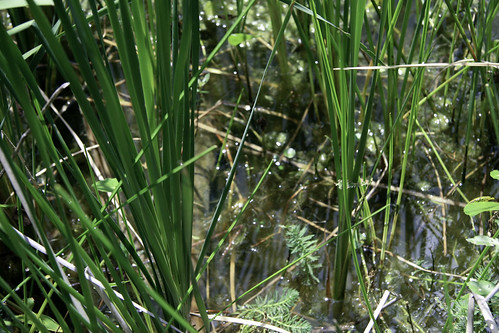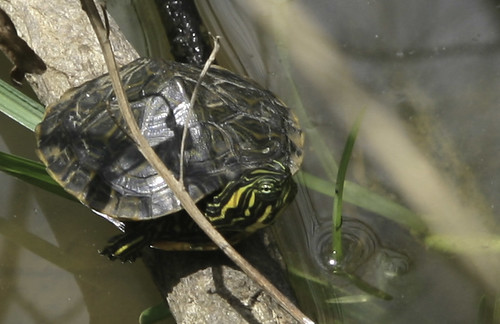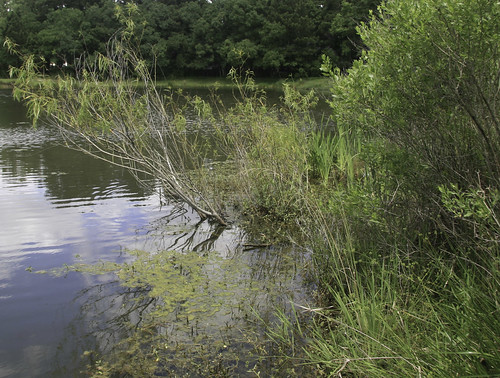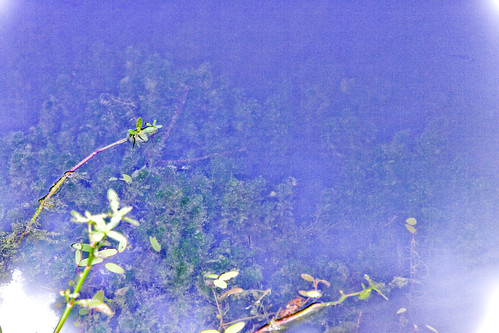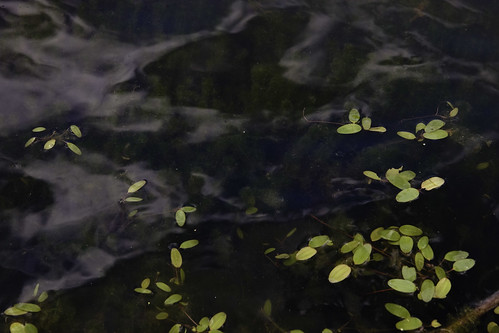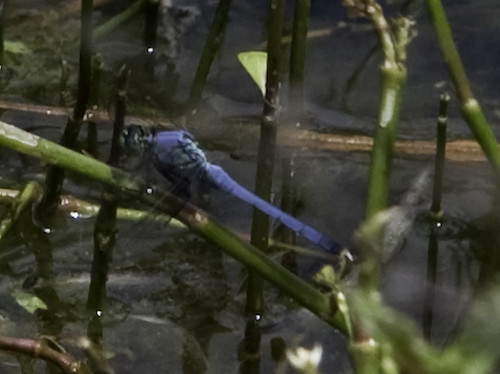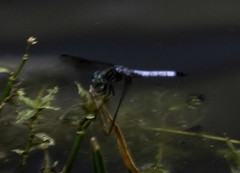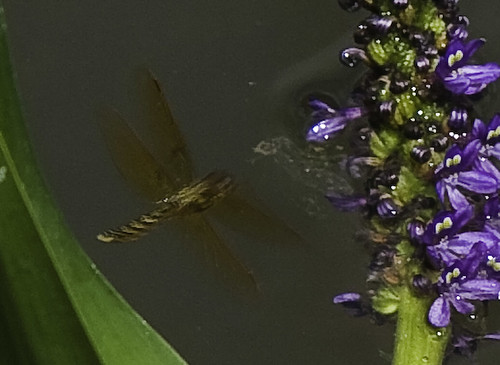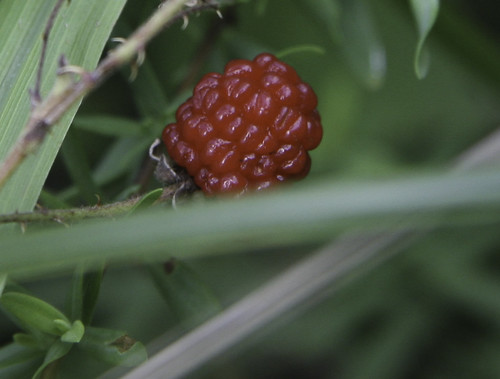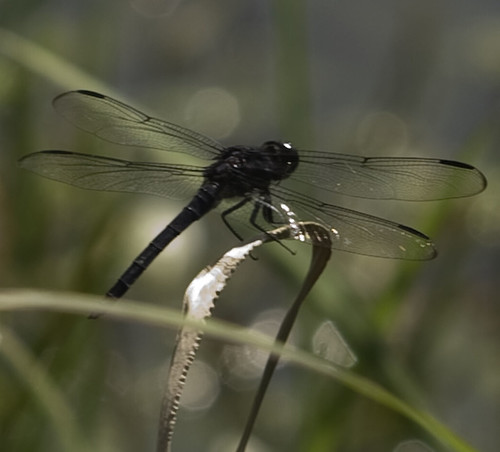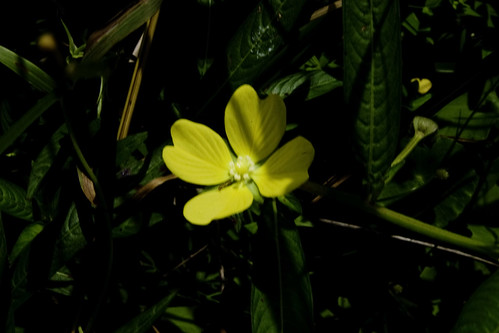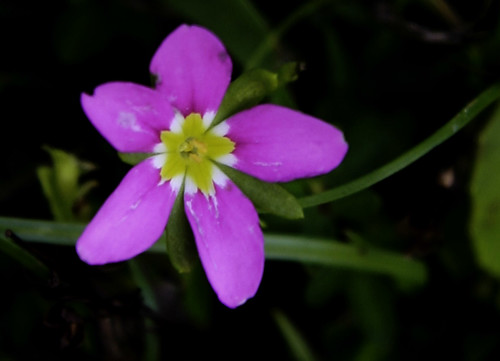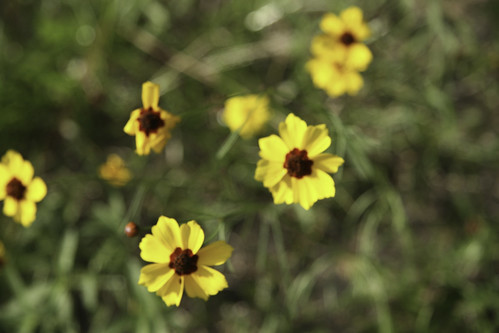Do you like to befriend animals? I know I do. My impression of the Coyote has been an elusive, wily and timid wild animal that helps control our local varmints. I see it as beneficial to the ecology about us. But is that an impression only from perception and not from fact? I decided to seek a better understanding of this animal and share it with my readers. Unfortunately, all my encounters have been without a camera, so I have no photos to show. However, there is a reference below with a photo of both a Coyote and a Red Wolf.
6 Human behavior should be different when it comes to a dog or to a Coyote. This is especially important in teaching our children how to behave in their presence. Humans should not be aggressive with dogs. A dog will be threatened and will protect itself or its human master if attacked. A Coyote will be intimidated and run. Therefore, it is recommended in various literature that a human not move in the presence of a growling dog, but let the animal calm down and slowly remove yourself from its presence to avoid being bitten. That behavior may entices the Coyote to approach the human.
As I write this article, the Coyote is at the beginning of its breeding season. This is the time one can hear the famous Coyote howl on very dark nights. We will see more of them during the day as well. This will continue through February into March.
Please allow me the opportunity to first tell you why I looked into this and why I want to share what I discovered. One day, a friend and I were on Spring Creek, on a Kayak fishing expedition. We came upon some children playing in the creek with adult supervision, so we said "hello" and after a few introductions, proceeded to hear a story they all wanted to tell. It was about this young Coyote they would see every morning when they came to the creek. That group traveled in a little two-wheel trailer pulled by a four-wheeler. We were interested and listened intently, asking questions. The adult instantly could tell that we had an interest in wildlife. The adult asked, "do you want to see this?" Our immediate response was "sure". We got in the back with the kids and rode up the trail with them. At some point, we turned around in the vicinity where they had last seen the Coyote. As we proceeded back, sure enough, the youngster suddenly appeared bouncing along beside us, some 100 feet away. This sure was a novel situation. I could see the fascination of viewing a wild animal of the forest as I looked into the eyes of the children. I was seeing the Coyote in a similar light as the children. I got this strange sense of a wild camaraderie between young humans and a young animal. There was no fear evidenced by either.
In retrospect, I understand now how I had felt that age-long connection between man's best friend (dog) and man. Perhaps that was in error. The children really do not have a grip on the difference between a dog and a Coyote, except the Coyote is found in the wild, and the dog is typically found in the home. We live in a society that wishes to retain all the wildness of nature that it can. That desire is currently packaged in a neat little box of "Green" and "Animal Conservation". The adult supervising the children was also in touch with the outdoors and felt a natural connection to nature by this close proximity to such a wild creature. This harmless dog-like animal maintained a distance of about 30 yards, running parallel with our 4-wheeler and did not threaten us, or so it seemed.
I have since had one other encounter. That was with a family of Coyotes about 5AM, just before daybreak. Standing only 40 feet from me next to the tree line, they were curious about me and appeared to be calmly studying me. They were not at all spooked. This was in The Woodlands proper, near a golf course. I froze and studied them also. They finally got bored and disappeared into the forest. They never made one move towards me nor did I take one step towards them.
Then one day I heard that our community was relocating our wild Coyotes before they could "turn urban", like those in California. Although that did not set well with me, I acquiesced and just let it all pass by without challenging the strategy. Recently, a new wave of concern surfaced with new but daylight sightings. So I researched the issue and asked an expert. This is what I found:
The number of threatening incidents in Texas is almost non-existent. Although we live amidst a forest where the Coyote thrives, we see little of them, and no one gets attacked. He eats small animals such as rabbits or rats. Tree rats are common here and provide a staple diet. Any small animal would be considered food by the Coyote. He will eat feral cats (domesticated also) and small dogs. He often hunts alone but may take his prey with the help of several members of his family. They also eat fruit, berries and insects. 5
He can be lured to a hunter with a caller that sounds like a squealing rabbit. I have witnessed the success of this tool in bringing a Coyote right into the back of a pickup truck! The only time this happened to me was with a friend of mine one time when he dared me to go. In west Texas, we waited for an animal to appear as we called. Nothing happened for a couple of hours. When we got tired, we waited a few minutes and a Coyote then jumped suddenly into back of the pickup. My friend and I were so startled that we jumped over the side to the ground, but we also saw the Coyote leave the bed of the truck on the other side. Neither he nor us wanted to have anything to do with each other. A close encounter, yet it proved nothing about the behavior of the animal. He did enter a human scent area, but he was only chasing what he thought was a normal meal.
Recently one local resident told me that the remains of her lost cat had been found nearby. Apparently a Coyote killed and ate it. This was disturbing, but we all know that our cats are at risk when outside during the night here. The cats are not supposed to be outside without a leash. Personally, I would never want to leash a cat. I have been through a thrashing machine before and don't want to experience that again.
We do have the coyote in our midst right here in The Woodlands. Do you respect his potential aggressiveness for the sake of your child's safety? Do your children know about this animal? If the statistics show a very low threat, why would I even ask? Urbanization of the Coyote habitat took place in the western area of our country long before it occurred here. We are in the early stages of habitat change. There are lessons to be learned from urban Californians and other western residents.
From studies there, over time, some of these creatures have learned not to fear man. There have been a number of threatening encounters out west and even small children dragged as apparent prey. "In some cases, our provision of ample resources to these urban coyotes (particularly in the form of intentional feeding) has resulted in their losing almost all fear of humans, and in some cases a few coyotes will become aggressive enough to attack pets and people." 1
New York state recommends: "People should never try to get close to a coyote. Any coyote that shows unusual boldness or acts tame should be avoided. Coyote attacks directed towards people have occurred in the western United States, and aggressive coyote behavior has also been reported in the eastern United States and in New York State."2
In Texas, we need to understand the North American trend towards increased Coyote aggressiveness. While studies in other areas continue to to be conducted, we must not lay back and be complacent. We must take precautionary measures to keep our children safe, yet not be overly aggressive ourselves toward removing one of the inhabitants of our forest. Here are some practical measures that we as residents can take:
- Do not feed or befriend the Coyote. He should fear man. We can even appear aggressive and to him by using sudden moves and intimidating gestures such as throwing an object in his direction.
- We should not encourage his presence in any way, giving him opportunity for malicious behavior.
- We must not corner the animal, forcing self defense.
- We should not allow very small children to play unattended in our green areas. Assume there are Coyotes nearby and one of them is aggressive.
- We should keep our small pets indoors at night. Don't let cats pets roam loose outdoors, especially outside of fences. The small ones become potential food for the Coyote. A dog the size of a Coyote or larger is considered a trespasser in his territory. A Coyote group will gang up on him.
- We should keep our fences maintained, what I call "pet tight", where no Coyote can enter and your pet cannot escape. If you have problems with this, use chicken wire at the base of the fence to prevent digging and passing under base boards.
- We should report sightings to the community association.
There are a few practices that our community can take or has already taken:
- Receive and track reported sightings through an organized process. (taken)
- Remove animals to another location if they are sighted during daylight.
- Respond quickly to sightings near children. Treat the sighting as an emergency.
- Deploy portable remote animal photography units in selected green areas to monitor activity and population.
Additional factsThe Coyote is considered a varmint, along with Bobcats and other animals. Coyote and other varmints may be taken in any number, by any method, 365 days a year in Texas! It's pelt can even usually fetch a couple of bucks or a little more. It's lifespan is only about 7 or 8 years. They will mate for life and have frequent encounters with their mate throughout the year. The Coyote is not a native resident of our forest. We had its larger but look-a-like cousin, the Red Wolf before 1900. Gradually, the Coyote displaced the Red Wolf because man drove the Red Wolf to extinction in East Texas.
6 Dogs are by far more dangerous to children and adults than the Coyote. It is important that we understand this. If we see a dog without a leash on the streets, I would be much more apt to report it than a Coyote. Many dogs are much larger and more dangerous than the Coyote.
So you can see that I do respect the Coyote. He is not my enemy. If he can stay on his diet of rodents and leave human flesh alone, he is welcome at my home, outside my fence. I regard him as a very minor threat to both my pets and my family. There have been no deaths in Texas or the southern part of the United States as a result of a Coyote attack and very few human incidents. Texas had two deaths in 2008 from dog attacks. There has already been a dog-related death for 2009 in Houston. This comparison is similar for every state of the nation. Let's cohabit the forest with the Coyote or even better yet, the Red Wolf. I am not optimistic that we will see any effort to being back the wolf however.
References
1 Statement by known Coyote expert, 2009, Bob Timm.
2 "Bad Dogs: Why Do Coyotes and Other Canids Become Unruly?" http://www.coyotebytes.org/urban_symposium.html
3 "Prevent Encounters with Black Bears and Avoid Conflicts with Coyotes" June 2006, http://www.dec.ny.gov/environmentdec/18907.html
4 "More Isle Coyote Sightings",Galveston County Health District, 2008 - http://www.gchd.org/press/2008/02Coyotesight.htm
5 "Behavior of Coyotes in Texas", undated, WILLIAM F. ANDELT, Department of Fishery and Wildlife Biology, Colorado State University http://texnat.tamu.edu/symposia/coyote/p2.htm
6"Coyote Mammals of Texas", Texas A&M, 1994, http://www.nsrl.ttu.edu/tmot1/canilatr.htm
7"RESPONSE TO COYOTE PREDATION ON PETS, Dorinda Pulliam City of Austin,TX, USA, 2007, http://digitalcommons.unl.edu/cgi/viewcontent.cgi?article=1069&context=icwdm_wdmconfproc
8"Coyote, Canis latrans", Texas Parks and Wildlife, http://www.tpwd.state.tx.us/huntwild/wild/species/coyote/

































